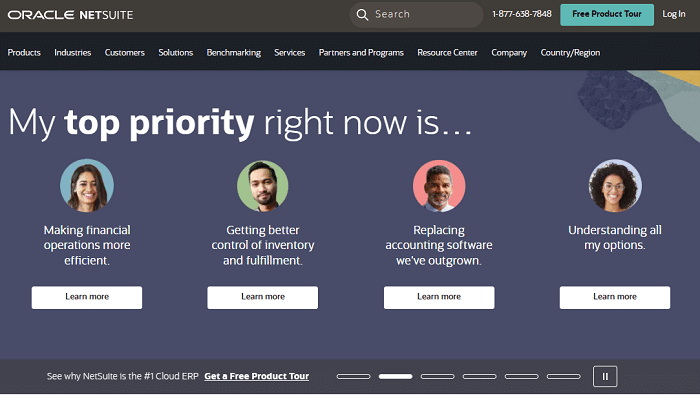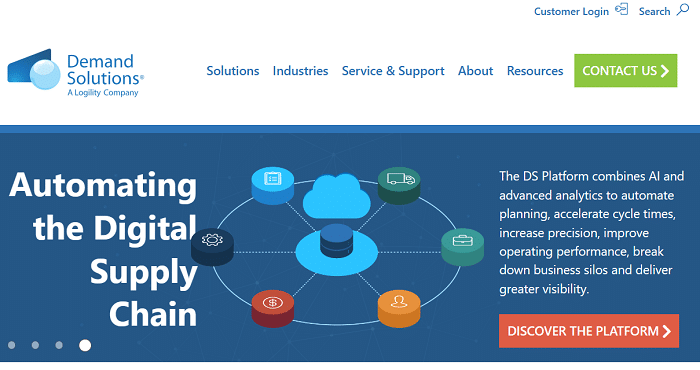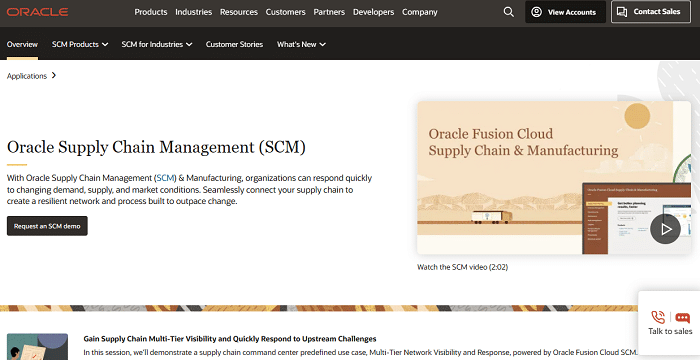Inventory forecasting software guide: our top 5 picks
Running inventory for an ecommerce business can sometimes feel like riding a roller coaster. Without the proper demand planning tools in place, all of those ups and down can be hard to predict. Not to mention that gut-wrenching stomach drop when something goes wrong and you’re unable to meet customer demand.
That’s where demand planning tools come in. By unlocking the secrets of future demand, inventory forecasting software helps businesses make accurate, data-driven inventory decisions to keep the supply chain moving and ensure customer satisfaction.
In this comprehensive guide to inventory forecasting software, we’ll delve deep into the inner workings of the inventory forecasting process to help you determine:
- What inventory forecasting tools do
- Why accurate inventory forecasting is essential
- The various types of inventory management software
- The features to look for in demand planning software solutions
- How to choose and implement the right inventory forecasting software
- Our top 5 software picks for inventory forecasting
- Common inventory planning, demand, and forecasting FAQs
What is inventory forecasting software?
Inventory forecasting software is a tool that utilizes historical data, trends, and algorithms to predict future inventory needs, enabling businesses to optimize supply chain management and make informed decisions about inventory levels.
Inventory forecasting software helps you streamline operations and achieve optimum efficiency across your entire supply chain. When implemented properly, it provides several operational advantages…
Predict sales and future demand more accurately
You can wave farewell to your understocking nightmares and excess inventory woes, because the days of relying on hunches are long gone.
Inventory forecasting software taps into the magic of data analysis to predict sales and demand with impressive accuracy. Advanced machine learning algorithms crunch the numbers and examine historical patterns, effortlessly identifying current market fluctuations, pinpointing seasonal trends, and even predicting unexpected spikes in demand.
Eliminate lost sales caused by inaccurate inventory data
Running out of stock at the wrong moment is a bit like showing up to a party empty-handed. It’s awkward, embarrassing, and, let’s face it, just not a good look.
By analyzing sales velocity and anticipated demand, inventory management software with inbuilt demand forecasting keeps inventory levels in check and lets you know when to restock. The result? Perfectly predictable demand, meaning no more retail fails, missed sales opportunities, or disappointed consumers.
Optimize stock levels
Introducing the Marie Kondo of inventory tracking. It’s time to spark joy and cut out the clutter!
All savvy ecommerce managers are painfully aware of ‘The Goldilocks Principle.’ The ultimate goal is to have just the right amount – neither little nor too much inventory. But achieving that knife-edge balance isn’t always easy. Demand planning software helps businesses optimize their stock levels by determining the optimal quantities to order, reducing the risks of wasted storage space and excess inventory.
What are the different types of inventory forecasting?

When it comes to inventory forecasting, one size most definitely does not fit all, as each ecommerce business has its own set of unique needs.
Fortunately, the inventory management universe offers a diverse range of techniques catering to every need imaginable. Let’s explore the colorful variety of inventory forecasting options available so you can gauge which might be the best fit to help your business thrive.
Demand forecasting
Demand forecasting is the bread and butter of inventory management, and it comes in two delicious flavors: seasonal and non-seasonal:
Seasonal demand forecasting
As the name suggests, seasonal forecasting analyzes historical sales data during specific times of the year to predict future demand.
Non-seasonal demand forecasting
Non-seasonal forecasting focuses on products with consistent sales throughout the year, employing statistical models and historical data to estimate customer demand.
Which should you use? Probably both, in all likelihood. While assessing seasonal trends may be all that’s required for ecommerce businesses selling products like swimsuits or holiday decorations, most brands would benefit from taking a hybrid approach.
For instance, a fashion retailer may use seasonal demand forecasting to stock up on winter coats, hats, and scarves, while relying on non-seasonal demand forecasting to manage year-round essentials like jeans, t-shirts, and underwear.
Trend forecasting
Sales trends aren’t just for fashionistas. They play a vital role in inventory forecasting too.
Trend forecasting examines market trends, customer preferences, and industry insights to predict future demand. By keeping an eye on emerging styles, new product launches, and customer behavior, businesses can anticipate shifts in customer demand and adjust how much inventory they hold accordingly.
For example, a skincare ecommerce merchant might analyze rising customer interest in organic and sustainable products to ensure accurate forecasting for such items and ensure they’re well-stocked.
Graphical forecasting
Think inventory forecasting is dull? Think again! There’s no reason why demand forecasts can’t be visually stunning.
This demand forecast technique brings data to life through charts, graphs, and visual representations, which helps you identify trends, spot anomalies, and make informed decisions at a glance – without having to wade through pages and pages of mind-boggling text and numbers.
Plotting historical sales data on line graphs, scatter plots, or bar charts makes it much easier for managers to visualize patterns, detect seasonal spikes, and plan inventory optimization accordingly.
Qualitative forecasting
Sometimes, it takes human intuition and expertise to navigate the unpredictable terrain of consumer demand.
Imagine you’re launching a new product line. It might be advantageous to get some advice from seasoned experts to ensure you gauge market reception to forecast future sales accurately.
Qualitative forecasting taps into the collective wisdom of industry experts like sales representatives and market researchers to gather qualitative insights and predict inventory needs. Tactics include surveys, focus groups, interviews, and even brainstorming sessions.
Quantitative forecasting
Numbers don’t lie, and quantitative demand forecasts are the ultimate exercise in number-crunching.
The quantitative method relies on past sales data, statistical modeling, and machine learning algorithms to assess inventory performance and predict future demand. By analyzing past sales trends, seasonality, growth rates, and other numerical factors, businesses can forecast future demand with precision.
For example, an electronics retailer might use quantitative forecasting to correlate past purchase orders with current inventory value to estimate the market demand for a newly released smartphone based on the sales history of similar products.
How to choose the right sales forecasting method

Now that you’re aware of all the options, it’s time to think more about which is the best approach for your business.
There’s no black-and-white answer (of course there isn’t, that would be way too easy!) because every burgeoning e-commerce enterprise is as unique as the humans that run it. For want of a better analogy, that makes finding the right inventory forecasting system a bit like finding the perfect partner. It requires a fair degree of natural compatibility, some careful consideration – and a sprinkle of good old-fashioned intuition.
These are the primary factors you need to consider to unravel the secrets of a successful match:
Your product lines
The forecasting tools you choose will vary depending on your specific industry and whether you sell predominantly seasonal or non-seasonal goods. Additionally, you’ll need to consider your product lifecycle. If you’re introducing new products with limited demand data available, your approach will be different than if you’re selling mature products that are rich in past sales data.
Your data needs
Do you already have access to extensive historical data that spans several years? And is your data set complete, or are there gaps that require a human touch to ensure forecasting accuracy?
You should also consider the needs of the inventory managers in charge of demand and inventory planning. Can they work with complex sets of historical inventory data? Or would a more aesthetically appealing representation lead to more informed decision-making?
So, can you use multiple methods?
Absolutely! To ensure ultimate forecasting accuracy, it’s not uncommon for ecommerce businesses to use a combination of inventory demand planning techniques based on different product lines, seasons, or market conditions.
In fact, utilizing multiple forecasting tools may be the best way to gain a comprehensive and holistic view of your overall inventory optimization needs. For example, you might employ qualitative methods for new product introductions, quantitative techniques for stable products, and seasonal demand strategies for products with distinct sales patterns.
What features to look for in your inventory forecasting software
Having the right inventory and forecasting tools facilitates soaring ecommerce business success. It also eliminates the potential for frustrating stock fumbles that result in lost sales and supply chain disruptions. So it’s a win, win.
Knowing which inventory software features are essential to you and your team is vital if you’re to optimize economic order quantity and maximize customer satisfaction. Let’s explore some must-have features.
A fast and intuitive user interface
Time is often – nay, always – of the essence in the often-chaotic realm of ecommerce. So, a fast and intuitive user interface in your inventory forecasting software should be a top priority.
Remember that an intuitive interface doesn’t just look pretty – although that certainly helps with widespread adoption between teams across multiple locations. It also saves you precious time by streamlining information to enhance the accuracy and efficiency of your inventory investment decisions.
Look for software that offers:
- A clean, inviting, and user-friendly interface
- Effortless navigation and easy information look-up
- Minimal training for new team members to get up to speed
Seasonal trend tracking
As we know from analyzing inventory forecasting methods, predicting customer demand can be complex because consumer preferences change with the seasons. So if you deal in seasonal products, it’s essential that your inventory forecasting software can effectively track and analyze seasonal trends.
Look for features that allow you to identify patterns, spikes, and dips at specific times so you can adjust your inventory investment, supply chain processes, promotions, and marketing strategies to meet customer demand 365 days a year.
Formula-based forecasting tools

Arguably, the heart and soul of inventory forecasting lies in the formulas and mathematical models that allow you to drive more accurate predictions. Only by analyzing sufficient sales history can you make informed inventory planning decisions. So it’s a good idea to look for inventory planning software that offers a variety of forecasting formulas, such as:
- Weighted averages
- Exponential smoothing
- Regression analysis
- Holt-Winters algorithm
For example, Linnworks inventory software applies advanced forecasting formulas that act as a secret weapon, helping you maintain optimal stock levels and avoid costly overstocking and stockouts. Every aspect of your sales data is considered, including trends, seasonality, and irregular variations, ensuring highly accurate forecasts that capture every revenue opportunity.
Forecasting vs. replenishment
While forecasting is essential for predicting future inventory needs, effective replenishment is equally vital. That means that, ideally, your forecasting software of choice will integrate both inventory forecasting and supply planning replenishment features.
By seamlessly aligning demand planning with replenishment, you can maintain optimal stock levels and prevent costly supply chain disruptions by automatically generating purchase orders based on restocking recommendations.
Demand planning for understock analysis
Understanding the impact of understocking on cash flow and the company’s bottom line is essential if you’re to make better inventory investments going forward. That’s why the best demand planning software has capabilities far beyond the simple seasonal variances we discussed in the previous section.
Forecasting by specifically analyzing understock situations helps you uncover lost sales opportunities by identifying instances where stock levels fell short. You can use this information to optimize your economic order quantity to ensure you meet demand while minimizing carrying costs and other expenses related to ordering, receiving, and holding inventory.
Synced ordering dates across SKUs
Syncing ordering dates across SKUs is a time-saving feature that ensures optimal coordination and efficiency. By aligning the reorder point schedules of various products, forecasting and inventory teams can prevent disjointed stock replenishment and optimize inventory turnover.
For example, on Linnworks inventory management platforms, businesses can set custom rules and parameters to synchronize ordering dates across SKUs, ensuring effective supply chain planning and operational efficiency.
Seamless integration with company data sources
When businesses can connect and consolidate data from various sales channels, warehouses, and suppliers into a single platform, they gain real-time visibility into inventory levels, sales performance, and customer behavior.
This is an area in which Linnworks inventory forecasting software excels. By offering robust integration with over 100 of the most popular selling channels, Linnworks ecommerce clients are guaranteed accurate forecasting and a birds-eye view of real-time inventory levels.
Automated inventory forecasting
Automated inventory forecasting takes the guesswork out of demand prediction by leveraging the power of artificial intelligence and machine learning algorithms. Automating the analysis of historical sales trends eliminates the need for manual calculations, making the patterns you identify much more accurate (yay to no more pesky data entry errors!). It also saves you a heap of time that is much better spent on essential business functions, enabling you to optimize inventory levels with minimal effort.
Supplier detail management
Managing supplier details and building kickass business relationships is a breeze with efficient supplier detail management. This vital retail planning feature allows businesses to organize and track essential supplier information such as contact details, lead times, and pricing, and cross-reference with historical purchase orders and shipping information. By centralizing supplier details within the inventory software itself, it becomes much easier to manage and maintain strong supplier relationships and ensure the timely replenishment required to meet demand.
Automated purchase orders
Why do any heavy lifting yourself when you can have a team of tireless robots do it for you? That’s pretty much the benefit of automated purchase orders. They eliminate manual processes, laborious data entry procedures, and the potential for human error, resulting in streamlined procurement and prompt replenishment every time. It’s essentially like having a perfectionist personal assistant who never forgets to restock your virtual shelves.
Automated inventory reports

Let’s face it. Manual reporting isn’t just time-consuming. It’s also pretty darn boring and a breeding ground for human error. Automated inventory reports eliminate the risk of mistakes and provide lightning-fast, real-time data insights into your inventory’s performance.
Fun fact: Did you know that automation can save companies up to 25,000 hours per year in time spent redoing work due to human error? That translates to a cost saving of around $878,000!
Forecasting software with inbuilt reporting for inventory demand and supply change planning is a complete game-changer, allowing you to bin your battered old calculator and stop endlessly tabbing between multiple spreadsheets. It’s like having a data wizard on staff. With pinpoint accurate reports rustled up in seconds, you can make informed decisions in the blink of an eye.
Seasonal indices analysis
If your average inventory list comprises any seasonal items, this forecasting software feature is a must. Every season is prone to fluctuations and unique patterns, but when you utilize seasonal indices, predicting when to switch up your stock needn’t be a blindfolded game of pin the tail on the retail donkey.
With both historical and real-time data at hand, you’ll know exactly when to pivot between product lines, enabling you to optimize cash flow, minimize excess inventory in the off-season, and define the best reorder point for the following season.
Inventory forecasting KPIs
Key Performance Indicators (KPIs) are the trusty sidekick of any ecommerce operator. The kind that is always on hand with the insights you need to make better decisions based on stock levels and performance. Inventory management software equipped with KPI features allows you to gather data and compile reports covering a wide range of metrics. A few examples include:
- Stock turnover rate
- Sell-through rate
- Days of inventory
- Reorder point
- Lead time
- Stock-to-sales ratio
With Linnworks, you can effortlessly track your KPIs to gain a clear picture of how efficiently your inventory is moving. Think of our inventory forecasting software as a health tracker dedicated to ensuring that your business stays fit and that your inventory is always energized and ready to conquer the ecommerce world.
How to choose the right inventory forecasting software
Selecting the right inventory forecasting software can feel a bit like navigating your way out of a labyrinth. There’s a veritable maze of options, and each organization’s needs can be as complex as they are unique. So, exactly how do you go about picking one – let alone the right one?
Here’s a list of the primary factors you’ll need to consider.
Aligning forecasting software with your business DNA
You’ll need to fully evaluate your business processes to identify each and every pain point before you can choose the right inventory software to jettison them all into oblivion. Leave no stone unturned – especially if you need to manage inventory planning in an unpredictable economy.
Understanding your specific requirements prepares you to choose the software solution that seamlessly integrates into your operations and empowers your team to make the best inventory investment at every opportunity.
For example, if you run a small boutique ecommerce business specializing in handmade crafts, you may prioritize inventory software with simple forecasting tools that offer easy-to-use features for order management, stock tracking, and integration with your online sales channels.
Conversely, if you operate a large-scale ecommerce marketplace with multiple warehouses and extensive product catalogs, you’ll likely need software that provides advanced inventory management capabilities like real-time syncing and robust reporting features for sales forecasting and revenue planning.
How many people will use your inventory forecasting software?
For a small ecommerce business with a limited number of team members, a cost-effective yet still user-friendly (that’s none negotiable) option with a smaller user license will likely suffice. However, for larger enterprises with multiple teams spread across various locations and departments, demand planning software must enable – and actively promote – the streamlining of business operations by providing:
- Multi-user access
- Role-based permissions
- Collaboration features
The scalability factor

It’s the classic dilemma. You could invest in a simpler (i.e., cheaper) system based on your current needs only to find it’s a false economy, as you’ll need to replace it as soon as your business outgrows it.
Selecting an inventory software system based on your current growth data and your future ambitions is crucial. So, it’s time to fast forward to your long-term goals if you’re to avoid making a decision now that you may regret later down the line.
To avoid making a frustrating forecasting faux pas, you’ll need software that can grow alongside your business, so it’s worth taking some time to consider where you’re headed in terms of scalability and expansion. For example, are you planning to:
- Expand into new markets
- Add new product lines
- Enter into partnerships with suppliers
If the answer to any of those questions is yes, you’ll need more complex inventory forecasting software to seamlessly accommodate the changes.
Questions to ask before choosing your inventory forecasting software
OK, so you’ve whittled down your options to a shortlist, and you might even have a front-runner. But buying forecasting software is a big commitment. So, before you press the big, scary ‘buy now’ button, it’s worth asking yourself – and your vendor – a few final questions so you can be confident in your investment.
Internal considerations
Before you implement inventory forecasting software, you should ask yourself the following questions to ensure suitability:
- Will it solve your current inventory demand challenges?
- Does it integrate with your existing systems and sales channels?
- Does it provide all the necessary features and integrations for forecasting, order management, and reporting?
- Does it provide all the necessary additional features you anticipate needing in the future?
- What is the total cost of ownership, including licensing, implementation, and ongoing support?
Vendor questions
Here’s a final shortlist of questions to ask your potential software vendors:
- Can the software accommodate multiple sales channels and integrate with popular e-commerce platforms such as Shopify, Amazon, or eBay?
- What level of onboarding support and ongoing training is offered?
- What types of reports, analytics, and insights can they provide?
- Can the software handle complex inventory scenarios like kit assembly, bundles, and other variants?
- What level of automation is offered for generating purchase orders and replenishment recommendations?
- How does the software handle stockouts and backorders?
- Is it possible to integrate with shipping carriers and logistics providers to streamline supply chain inventory planning?
- Are there additional customization fees?
- What security measures are in place to protect your business data?
Our top 5 inventory forecasting software picks for ecommerce businesses
The good news is that you don’t need to fret about extensive research. You can save yourself the hassle of looking into the countless options for forecasting software one by one, because we’ve done the work for you!
So without further ado, here are our top five picks for inventory forecasting software tools that will revolutionize your inventory management processes and help your business thrive.
Linnworks
Linnworks is a leading inventory management and order fulfillment software provider. Our innovative inventory forecasting software helps managers to work smarter rather than harder to manage inventory demand.
Key features
While the complete list of inventory planning features is extensive, here’s a summary of the most vital components:
- Centralized inventory control with real-time syncing across multiple sales channels.
- Advanced demand and replenishment forecasting capabilities for accurate inventory predictions.
- Streamlined order management, shipping integrations, and automated purchase order generation.
- Comprehensive reporting and analytics for data-driven decision-making.
- Integration with over 100 popular e-commerce platforms, including Shopify, Amazon, and eBay.
Ideal for:
E-commerce operators of any size looking for an all-in-one solution.
Those seeking easy-to-use software with comprehensive inventory management features.
Businesses aiming to streamline their order fulfillment processes and optimize inventory turnover.
Top tip for buyers
Linnworks offers a free trial to test its features and suitability for your business.
SkuVault Core
SkuVault is a cloud-based inventory and warehouse management solution designed to optimize inventory control so sellers can sell, pick, and ship faster.
Key features
Here’s a list of the primary reasons why Skuvault slides into our number two spot:
- Real-time inventory tracking and visibility across multiple warehouses.
- Barcode scanning and fulfillment workflows for efficient order processing.
- Flexible bundling and kitting options across an array of complex inventory criteria.
- Integrations with popular e-commerce platforms, shipping carriers, and accounting software.
- Comprehensive reporting and analytics for inventory insights.
Ideal for:
Ecommerce businesses with complex inventory needs and multiple warehouse locations.
Organizations looking for a robust warehouse management system combined with inventory forecasting capabilities.
Top tip for buyers
SkuVault offers tailored solutions for various industries, encompassing a broad spectrum of retail and wholesale ecommerce verticals.
NetSuite

NetSuite is an enterprise resource planning (ERP) software with complete inventory forecasting and advanced management functionality.
Key features
NetSuite enables businesses to automate key processes by providing:
- Comprehensive inventory tracking, demand planning, and order fulfillment capabilities.
- Integration with other NetSuite modules like accounting, CRM, and e-commerce.
- Advanced reporting and real-time financial analytics for deep insights into inventory performance.
- User role-based access and strong encryption ensure secure access to data and systems.
Ideal for:
Mid-sized to large businesses requiring an ERP system with integrated inventory forecasting.
Companies looking for an end-to-end solution that combines inventory management with other essential business functions.
Top tip for buyers
NetSuite is a powerful and feature-rich solution, but may require dedicated implementation resources and significant ongoing maintenance.
Demand Solutions

Demand Solutions is an Ai-based supply chain planning software that combines demand forecasts with inventory optimization.
Key features
Check out the top-ranking Demand Solutions features that landed them a spot in our coveted top five:
- Advanced demand forecast algorithms for accurate predictions.
- Inventory optimization capabilities to minimize costs and maximize service levels.
- Collaboration tools for demand planning across the supply chain.
- Analytics and reporting for monitoring and evaluating inventory performance.
Ideal for:
Businesses with complex supply chain requirements and a focus on demand planning.
Operators looking for a specialized solution that combines demand forecasting with inventory optimization.
Top tip for buyers
Some manual manipulation may be required as the software emphasizes the most current history and forecasts, which may not always be the trends you want to follow.
Oracle Supply Chain Management (SCM) Cloud

Oracle SCM Cloud is a comprehensive supply chain management suite with incorporated inventory forecasting capabilities.
Key features
Here is a shortlist of standout attributes that earn Oracle software solutions a place on our best-in-class list:
- Demand management and forecasting functionalities for accurate reorder point planning.
- Integrated supply chain planning, order management, and logistics capabilities.
- Real-time visibility into inventory levels, supplier performance, and customer demand.
- Intelligent track-and-trace product details powered by blockchain and IoT.
Ideal for:
Enterprises seeking an enterprise-grade solution that combines inventory forecasting with broader supply chain management capabilities.
Businesses that value the reliability and scalability of an established software provider.
Top tip for buyers
Of all the options in our top five, this is perhaps the most difficult to use for non-technical personnel.
Say goodbye to manual processes and hello to smart order management with Linnworks
We recognize that giving you a list of four other software options to check out was a bold move. But we’re good with it.
Here at Linnworks, we believe in openness, honesty, and transparency. So, we’d prefer you give you all the info you need so you can check your options thoroughly and make an informed decision.
Plus, while we’re humble enough to admit that there are other worthy players in the forecasting and inventory software game, we’re 100% confident that our platforms present the best solution for your business.
Ready to discover the power of a partnership with Linnworks? Or, at the very least, get a sneak preview into how much easier we can make your day-to-day business life?
Take our 3-minute interactive product tour today, book a custom demo, or contact our team to learn more.
Inventory forecasting software FAQs
Q: What is inventory forecasting software?
Inventory forecasting software is a digital tool that uses historical sales data, current stock levels, and predictive analytics to forecast future inventory needs. These tools help businesses maintain optimal stock levels, minimize stockouts or overstock situations, and effectively manage supply chain operations.
Q: What is the best way to forecast inventory?
The best way to forecast inventory is through the use of demand forecasting techniques, including historical sales data analysis, market trends study, and predictive analytics. Utilizing inventory forecasting software can make this process more accurate and efficient. The approach should be periodically reviewed and adjusted based on actual outcomes to ensure the most accurate forecasts.
Q: How to do inventory forecasting in Excel?
A: Inventory forecasting in Excel involves several steps:
- Gather historical sales data and list it in Excel.
- Use Excel’s statistical functions such as “FORECAST.ETS()” or “LINEST()” to create a forecast based on the historical data.
- Use this forecast to predict future inventory needs.
- Regularly update the model with new data to improve accuracy.
Remember, while Excel can be a powerful tool, more sophisticated inventory forecasting software like Linnworks can provide more accuracy and efficiency.
Q: How much does it cost to forecast inventory?
The cost to forecast inventory varies widely depending on the method used. Doing it manually using tools like Excel would only require the time and expertise of your staff. If you opt for inventory forecasting software, costs can range from free for basic tools, to several hundred dollars a month for more advanced systems. Keep in mind that while there may be an initial cost, effective inventory forecasting can save businesses money in the long run by reducing overstock and stockout situations.